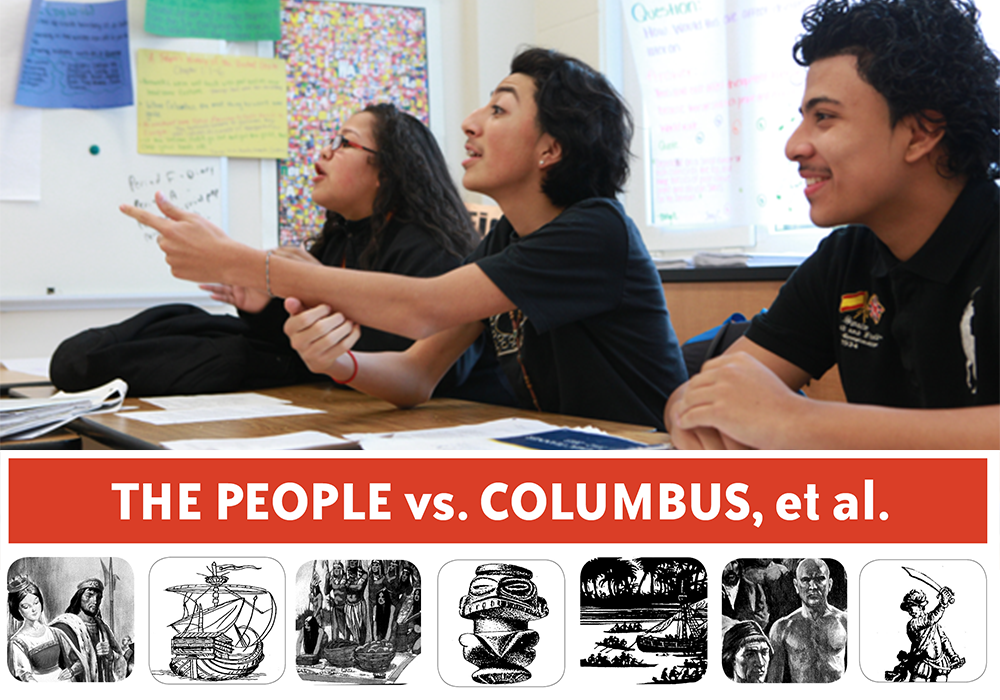The People vs. Columbus lesson was transformative in my classroom. Students were initially motivated by the competitive aspect of the lesson in trying to “win” during the trial. During the preparation of this lesson, students were able to really practice historical contextualization by looking through various points of view.
Additionally, I supplemented this lesson with primary sources from Voices of a People’s History. Working with the primary sources provoked deep discussion about why certain points of view are omitted or de-emphasized in American History. We compared Las Casas to Columbus and discussed the development of racism and ethnocentrism.
On the day of the trial, students were completely engaged in the process of argumentation, viewing history (in many cases for the first time) as more than just fact, but a series of arguments presented through various frameworks. By the end of the trial, it was clear that blame was very difficult to lay on just one group. It encouraged them to think more critically about a complex web of contingencies that all led to the genocide of the Taínos. They were engaged through the entire unit, practiced presentation skills, research, historical argumentation, and more.







Twitter
Google plus
LinkedIn